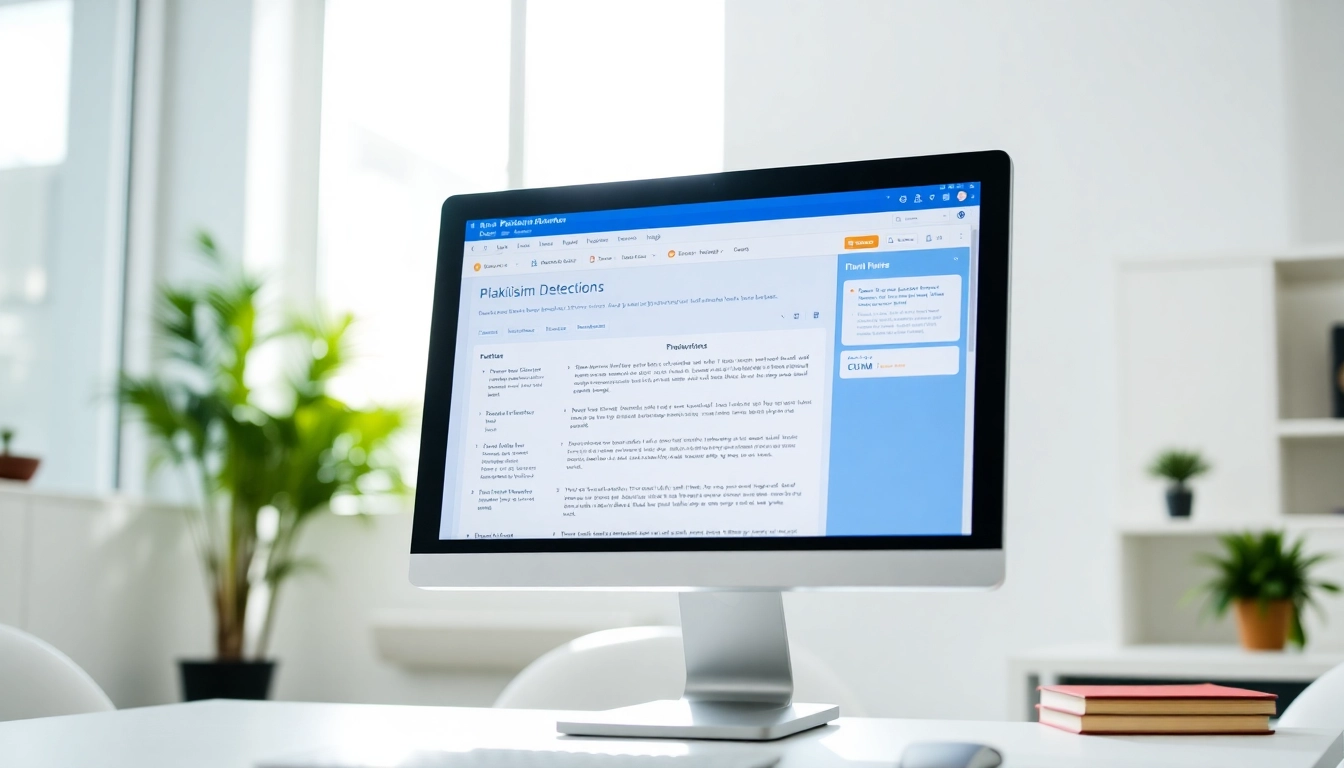
The Role of a Plagiarism Detector in Education
In an increasingly competitive academic environment, maintaining originality and integrity in written work is more important than ever. Students, educators, and academic institutions are finding value in tools designed to ensure adherence to ethical writing standards. A plagiarism detector is one such tool that has gained traction among both students and professionals. These detectors serve as vital resources in promoting academic honesty, helping individuals create original content while minimizing the risk of unintentional plagiarism.
Why Students Use Plagiarism Detectors
Many students turn to plagiarism detectors as a preemptive measure before submitting their assignments. The motivation often stems from fear of academic penalties and the desire to uphold their integrity. The ability to check for similarity against a vast database of texts allows students to be more confident in their submissions. Moreover, as academic institutions increasingly incorporate such technologies, students are better equipped to meet the expectations of their educators.
Understanding Academic Integrity
Academic integrity encompasses principles that emphasize honesty, trust, fairness, respect, and accountability in scholarly practices. Understanding and adhering to these principles is crucial for students, as violations can lead to serious consequences including expulsion. Plagiarism detectors assist students in learning the value of original work and ethical research practices. Thus, they help foster an academic culture where creativity and critical thinking thrive.
Common Misconceptions About Plagiarism
Despite the growing awareness of plagiarism and its repercussions, misconceptions still prevail. A widespread myth is that plagiarism only involves verbatim copying of another’s work. In reality, plagiarism extends to paraphrasing without proper citation, failing to credit collaborative efforts, or using media without acknowledgment. A comprehensive understanding of what constitutes plagiarism is paramount, and plagiarism detectors reveal areas where students may be inadvertently infringing on others’ intellectual property.
How Plagiarism Detectors Work
Understanding the mechanisms behind plagiarism detection tools is crucial for their effective use. These tools utilize a variety of technologies and strategies to identify copied content, ensuring that users are alerted to potential issues.
Key Technologies Behind Detection
Plagiarism detectors often employ advanced algorithms that compare submitted text against extensive databases, including published articles, student papers, and web content. Most plagiarism detection systems use techniques such as text matching, semantic analysis, and fingerprinting. These technologies help to ascertain not just direct copying but also disguised forms of plagiarism through paraphrasing or slight modifications.
Types of Plagiarism Detectors
The landscape of plagiarism detection tools is diverse, catering to various needs and budgets. Some of the most common types include:
- Free Online Detectors: Basic versions are often available at no cost but may have limitations regarding the length of text that can be analyzed.
- Institutional Licenses: Academic institutions frequently invest in comprehensive solutions like Turnitin, which offers robust features suited for educational settings.
- AI-Powered Tools: Advanced solutions that integrate artificial intelligence for improved accuracy and the ability to detect subtle forms of plagiarism.
Understanding Detection Metrics
Plagiarism detectors provide several metrics, including percentage match rates and the sources of any detected similarities. Understanding these metrics can help users gauge the originality of their work. It is essential to interpret these statistics wisely, as a high percentage of matching content does not automatically imply plagiarism if the matched content falls under proper citation.
Choosing the Right Plagiarism Detector
With numerous plagiarism detection tools available, selecting the right one can be daunting. Understanding their features and capabilities is vital for making an informed choice.
Features to Look For
When evaluating plagiarism detectors, consider the following essential features:
- Database Size: The larger the database, the more comprehensive the checks. Platforms with extensive archives often produce more accurate results.
- Real-Time Feedback: Tools that provide immediate analysis will help users make adjustments to their work before submission.
- Multiple Format Support: Consider whether the tool accepts various file types, such as Word documents, PDFs, or even web pages.
Comparing Free vs Paid Tools
Free plagiarism detectors can be appealing; however, they often lack the comprehensive features and resources available in paid versions. Paid tools not only access larger databases but also offer advanced functionalities, such as grammar checking and citation generation, thus providing a more holistic writing assistant experience.
User Reviews and Recommendations
Take the time to read user reviews and seek recommendations before purchasing a plagiarism detector. User experiences can provide valuable insight into how well a tool performs in real-world applications. Platforms with a solid reputation in the academic community often yield more reliable results.
Best Practices for Using a Plagiarism Detector
Utilizing a plagiarism detector effectively can enhance the quality of academic writing. Here are some best practices to consider:
How to Effectively Use the Tool
When using a plagiarism detector, follow these guidelines for maximum effectiveness:
- Use Early in the Writing Process: Running your draft through a plagiarism detector allows you to identify and rectify issues before final submission.
- Review Matched Content Carefully: Not all highlighted matches are problematic. Understand the context of the matches and whether they require citations.
- Seek Guidance: If uncertain about how to address detected plagiarism, consult with a writing instructor or a knowledgeable peer.
How to Interpret Results
Understanding the results from plagiarism detectors is pivotal. High similarity percentages require closer examination, while low matches could indicate either good originality or the presence of commonly used phrases. Users should focus on the sources identified in the results to determine if citation needs to be added.
Steps to Avoid Plagiarism
Avoidance techniques are essential for maintaining academic integrity. Key strategies include:
- Properly Cite Sources: Always provide appropriate citations for ideas borrowed from others to prevent plagiarism.
- Paraphrasing Correctly: Ensure that your paraphrased content genuinely reflects your understanding and doesn’t just alter a few words of the source material.
- Keep Good Notes: When conducting research, track your sources meticulously to simplify citation during writing.
The Future of Plagiarism Detection Tools
As technology continues to advance, the future of plagiarism detection tools looks promising. Educational institutions will likely benefit from enhanced capabilities designed to promote originality.
Trends in Academic Technology
The integration of artificial intelligence and machine learning in plagiarism detection is a growing trend. These advancements can improve accuracy by learning from past data and adapting to new forms of plagiarism as they emerge. Additionally, the rise of hybrid learning environments increases the importance of accessible online tools that support students and educators alike.
The Role of AI in Plagiarism Detection
AI is set to revolutionize plagiarism detection beyond traditional pattern matching. Smart algorithms can identify nuanced forms of writing and detect subtle shifts in language that may indicate copied or paraphrased content. Future tools may also incorporate features that help users understand and rectify their writing styles to enhance originality.
Predictions for the Next Decade
Looking ahead, one can anticipate a surge in tools that seamlessly integrate plagiarism detection with other writing resources. This could include comprehensive platforms that not only check for originality but also enhance overall writing quality, assist in research methodologies, and facilitate easier citation management. As digital education continues to evolve, resources will increasingly empower students to develop their academic skills.







